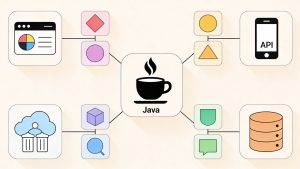Spring Boot began its journey in 2014 with a compact single auto-configuration jar, designed to simplify and accelerate enterprise Java development. Over time, as the framework embraced more technologies and integrations, that jar expanded in size and scope—adding both capabilities and complexity. In response to developer needs for enhanced focus and maintainability, Spring Boot 4 introduces a modular architecture that marks a major evolution in the framework’s design.
Spring Boot 4 departs from the monolithic model by splitting its extensive auto-configuration library into smaller, purpose-driven modules. Every supported technology now receives its own focused starter, delivering practical improvements in clarity, maintainability, and runtime efficiency. Module boundaries are rigorously enforced, making code completion, configuration, and dependency management in IDEs far more precise and streamlined.
Modularization Benefits for Developers
- Improved maintainability through smaller modules with clear domain boundaries. Developers and contributors can reason about each area of the codebase, reducing complexity and accidental misconfigurations.
- Reduced disk footprint and startup scanning. Only necessary modules are pulled in for each application, decreasing classpath overhead and boosting performance.
- Stronger dependency signals, preventing unwanted or unexpected auto-configuration. By explicitly scoping modules, teams maintain better control over which technologies are present and active within a project.
- Emergence of new use-cases, such as using parts of the metrics platform independently without the full actuator dependency chain.
Testing Support Now Modularized
Spring Boot’s approach to testing has also evolved. The former test-autoconfigure jar is now partitioned, aligning each test annotation and utility with its corresponding main module. Dedicated test-specific jars mirror the starter modules, and for every main starter, there is a complementary test starter POM—simplifying setup and ensuring tight integration between application modules and their test support.
Migration Guide: Upgrading to Spring Boot 4
Transitioning applications from Spring Boot 3 to 4 is designed to be straightforward for most projects. Key steps include updating primary starter dependencies, adding test starter modules, and refactoring any custom auto-configuration or shared libraries for compatibility with the new modular structure.
Steps to Migrate Efficiently
- Refine main starter dependencies. New starters automatically pull in relevant modules transitively. For some technologies, now split out into dedicated starters, add these to your build configuration for full support.
- Use new test starters. Each technology starter is paired with a test-scoped module, delivering the right context and utilities for automated testing.
- Adjust manual and custom configuration. Replace direct dependencies or imports from the legacy autoconfigure jar with their modular equivalents, updating package names as required for compatibility.
- Assess custom starters and shared libraries. Organizations should avoid mixing Spring Boot 3 and 4 support in single artifacts, due to major refactoring in module and package organization.
Classic Starter POMs for Smoother Transition
To help teams adopt modularization at their own pace, Spring Boot 4 offers “classic” starter POMs that bundle all relevant modules. These classic starters simplify initial upgrades and allow gradual migration to selective module dependencies as projects evolve.
Conclusion: Building Leaner, Composable Apps with Spring Boot 4
The modular architecture in Spring Boot 4 delivers significant gains in maintainability, overall clarity, and reduced runtime complexity. By dividing functionality into purpose-built modules, introducing classic starters for transitional support, and aligning testing infrastructure with main application modules, the framework empowers Java teams to create applications that are lighter, more focused, and easier to manage.
Developers planning migration should leverage only the modules needed for their use case, unlocking a cleaner and more expressive project structure. For those who need extra time, classic starters offer a safe bridge to full modularization. Community feedback continues to guide enhancements, and the Spring Boot team encourages bug reports and suggestions as new milestones roll out.
Read more such articles from our Newsletter here.



